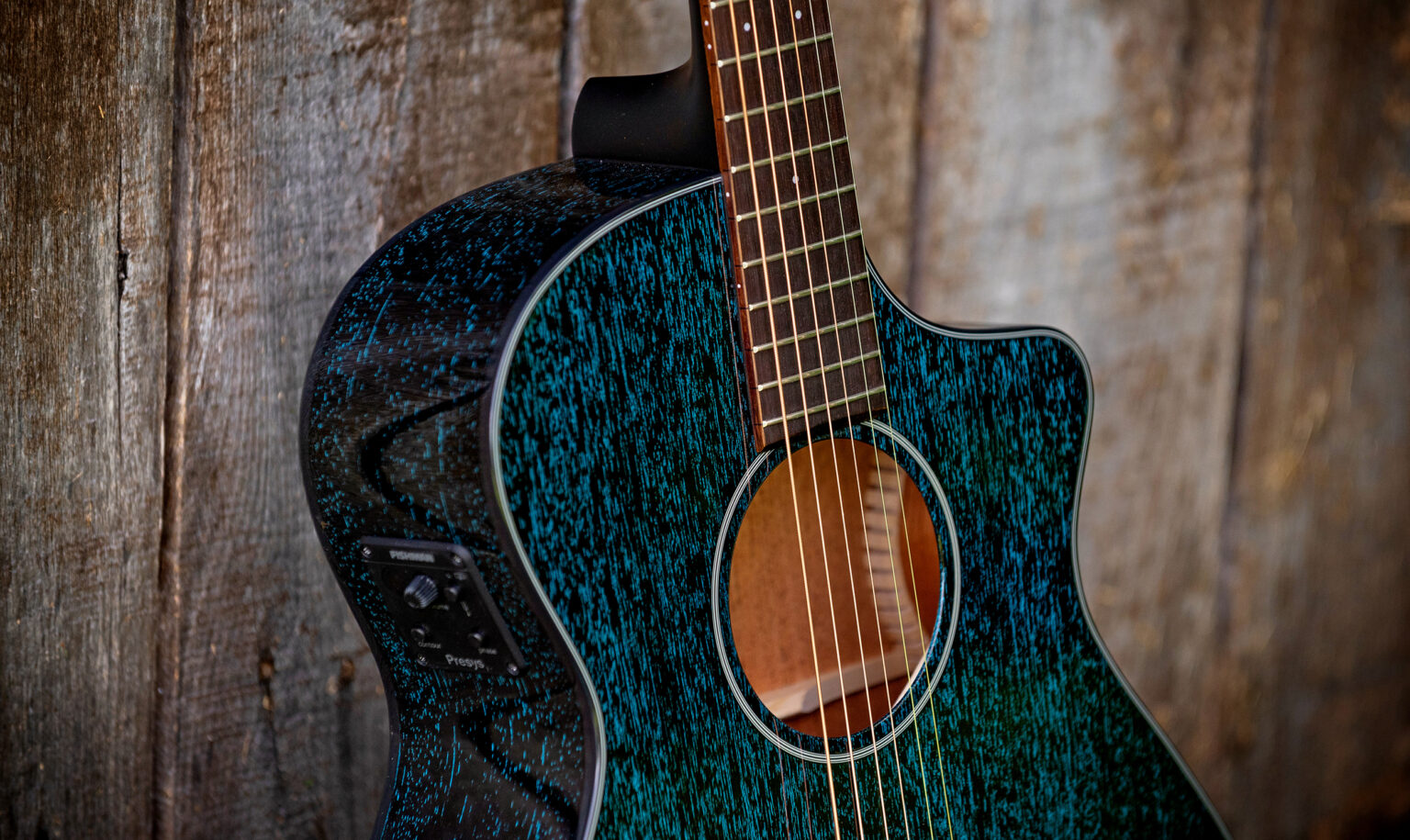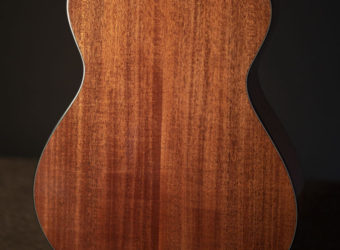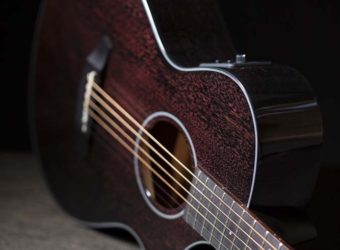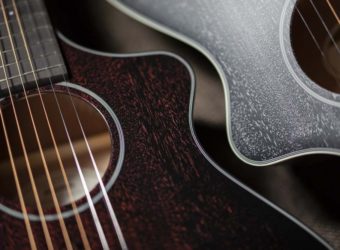
Mahogany might be the quintessential tonewood. You’d be hard pressed to find another wood that can make every single element of an acoustic guitar. If they had to build a guitar from soup to nuts from one single tree, most builders would choose mahogany. Its warm, woody tones defined the sound of Americana and folk; its long, consistent grain and ease under the chisel made it the go-to for early electrics like the Les Paul as well.
Modern guitar buyers, however, encounter a huge variety “mahoganies” in the market. Which one is the “real” mahogany? Here at Breedlove, we primarily (though not exclusively) build with “African mahogany” for reasons we’ll explain a little later on. You may be wondering, however, what is African mahogany? How is it different from regular mahogany?
What is Mahogany?
Mahogany is not a type of tree. Mahogany is not even a type of wood. Mahogany is a subjective category, a general descriptor applied to many trees. “Mahogany” can refer to 18 different species from 11 separate genera that fall into five orders. In case high school biology is as distant in your rearview mirror as the once mandatory 55mph national speed limit, that basically means trees bearing the name “mahogany” might be as closely related as chihuahuas and walruses.
Genuine Mahogany
Only three different tree species in the Swietenia genus can be called “genuine mahogany.” Cuban mahogany, Swietenia mahogani, holds down the O.G. mahogany moniker. If you want to get all technical about it, this is where the term mahogany came from (hence the Latin), and some purists might be tempted to claim this as the only real mahogany…but they don’t. Why? Cuban mahogany has been virtually non-existent in the wood market for almost 80 years, ever since Cuba banned its export in 1946 due to overharvest. Unless you are deep in the antique furniture scene, you’ve probably never even touched this wood.
Most genuine mahogany on the modern market is Honduran or Bigleaf mahogany, Swietenia macrophylla. Very similar to its Cuban cousin, Honduran mahogany has long been prized for furniture, boats and, of course, guitar bodies—especially backs, sides, and necks. Unfortunately, high-quality Honduran mahogany supply has drastically dwindled in the past few decades. Part of what makes this wood so exceptional is the size of the trees: Large specimens yield high-quality boards with the long, straight grain that builders crave. But mature trees are old trees, and most old-growth Honduran mahogany is long gone. Much of the Honduran on the market today comes from tree farms where specimens are harvested too soon to produce truly high-quality wood. Not to mention the ecological problems of farming trees instead of letting them grow as a part of ecosystems, but that’s another article in itself.
True Mahogany vs African Mahogany
The fact that “true mahogany” and “genuine mahogany” are different speaks to the disingenuousness of wood marketing in general. One might think, from an etymological perspective, that these are one in the same. They are not, though they are very similar. If we move one rung up the taxonomic ladder from Swietenia, we get to the family Meliaceae, which includes both the Swietenia genus and the Khaya genus. Wood from Khaya trees is sometimes called “true mahogany.” At Breedlove, we call Khaya African mahogany as a way to distinguish it from Honduran mahogany.
Confused yet?
Let’s recap, wood from Swietenia trees is called “genuine mahogany,” wood from Khaya trees is called “true mahogany” or African mahogany, and they’re all relatively closely related, though not in the same genus.
For a very helpful visual reference, check out this graphic from wood-database.com
Now for the part that matters to guitarists, any of the aforementioned wood, be it from Swietenia or Khaya, makes dynamite guitars. So long as it comes from a quality tree that’s appropriately harvested, milled, and seasoned, all these trees make guitars with exceptional look, sound, and feel.
How is African Mahogany Different from Honduran Mahogany?
Despite the fact that it comes from a different tree that grows on a different continent, African mahogany has many of the same characteristics as Honduran mahogany. They are both large trees with long, consistent, straight grain. They have exceptional stability, natural rot resistance, and beautiful color. Unless you’re a wood expert, boards are almost indistinguishable when compared side by side. African mahogany tends to be slightly darker and redder in color and a bit stiffer and harder than Honduran.
As with all tonewood discussions, sound is ultimately subjective. The broad consensus among luthiers, however, is that comparable guitars made from African and Honduran mahogany have very similar sonic profiles. They shine in mid-range frequencies—the sweet-spot for acoustic guitars. They both produce warm, woody tones with exceptional projection and balance. Their sound is often described as clean, focused, and crisp.
Why Does Breedlove Use So Much African Mahogany?
The short answer is sustainability. As the world’s first instrument manufacturer to eliminate all clear-cut from everything we build, we only use truly sustainable wood. Honduran mahogany is listed on the CITES appendix II and the IUCN Red List. Since the 1990’s, concern over the exploitation of these trees has expanded, and their harvest and export has been significantly curtailed. Much of the Honduran mahogany found in today’s market comes from farmed trees. Since we only use wood selectively harvested from healthy forests and functional ecosystems, very little of the Honduran mahogany available today meets our standards.
African mahogany forests, while still listed as vulnerable by the IUCN, have not been as heavily exploited as their Central American counterparts. We work closely with forest preserves in The Republic of Congo that only sell trees that have fallen on their own, or are strategically harvested to benefit the broader forest ecosystem. Our African mahogany comes from naturally grown, mature trees that produce wood of exceptional quality. Our close relationships with the people who procure, prepare, and supply our wood using only sustainable methods, ensure that we have ample supply now and into the future.
Hopefully, all this gives you a better understanding of what mahogany is (and isn’t). We want you to feel confident and empowered when you walk into your local shop. Try out some mahogany guitars and you’ll remember why it’s been the go-to tonewood for nearly a century.






